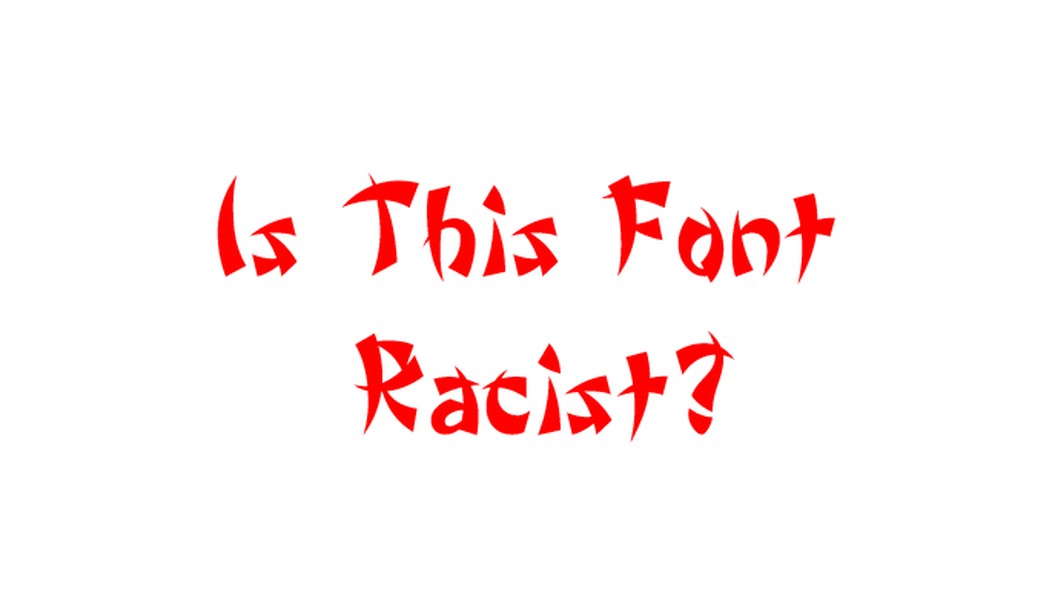Anne Quito has written a piece for CNN as part of their new series called “Hyphenated,” which “explores the complex issue of identity among minorities in the United States.”
In it, she asks the age-old question: “Can a font, in itself, truly be racist?” Because it’s CNN, obviously, the answer is yes. And you should have guessed that, because, apparently, as we learned earlier this week, trees can be racist, too.
While most of us can agree that the font Comic Sans is offensively awful, the question of whether fonts can actually be racist is obviously a sign that true, legitimate racism is so hard to find that we actually have to make everything inherently racist just to have something to complain about.
According to Quito, the commonly used “chop suey fonts” that evoke the style of Asian calligraphy are suddenly problematic.
Quito notes that according to the historian Paul Shaw, “Neither the food nor the fonts bear any real relation to true Chinese cuisine or calligraphy. But this has not prevented the proliferation of chop suey lettering and its close identification with Chinese culture outside of China.”
RELATED: Well, Apparently, Trees Might Be Racist Now, Too
“It’s hard not to cringe at the Chinese stereotypes bundled up with each font package — especially when seen through the lens of today’s heightened vigilance toward discrimination and systemic racism,” Quito writes. “Critics believe that using chop suey typefaces is downright racist, particularly when deployed by non-Asian creators.”
But, here’s the rub: the first two paragraphs of her story arguably make that irrelevant:
Here’s a thought experiment: Close your eyes and imagine the font you’d use to depict the word “Chinese.”
There’s a good chance you pictured letters made from the swingy, wedge-shaped strokes you’ve seen on restaurant signs, menus, take-away boxes and kung-fu movie posters. These “chop suey fonts,” as American historian Paul Shaw calls them, have been a typographical shortcut for “Asianness” for decades.
Perhaps I’m wrong, but who typically owns and operates Chinese restaurants? I’m not into kung-fu movies myself, but my guess is that most feature a heavily Asian cast, and probably have a significant number of Asians involved in their production. Are these Asians racist for using fonts that are linked to the culture?
Spoiler alert: No.
Consider this: If you Google “Jewish fonts” you will, without a doubt, come up with a wide selection of fonts depicting English letters styled like Hebrew letters.
If you Google “Mexican fonts” I guarantee that you’ll find a font that bears a striking resemblance to a font you’ve seen on the menu of your favorite Mexican restaurant. Chances are very good your local Irish pub’s signage and menu will use a font that you would consider “Irish.”
Similarly, you’ll find that Googling “Arabic fonts,” “Greek fonts,” “Celtic fonts,” “Russian fonts,” etc., will all produced fonts that are associated with that particular culture or region. Font choices are a critical aspect of branding, and whether CNN wants to admit this or not, many of the people choosing to use these fonts are the very people they’re claiming should be offended by their usage. But they’re not—at least not enough that they’ll buck the trend by not using them. The fact is the use of these fonts is not about negative stereotyping, it’s about marketing. Maybe it’s outmoded now, but that doesn’t make it racist.









Join the conversation as a VIP Member